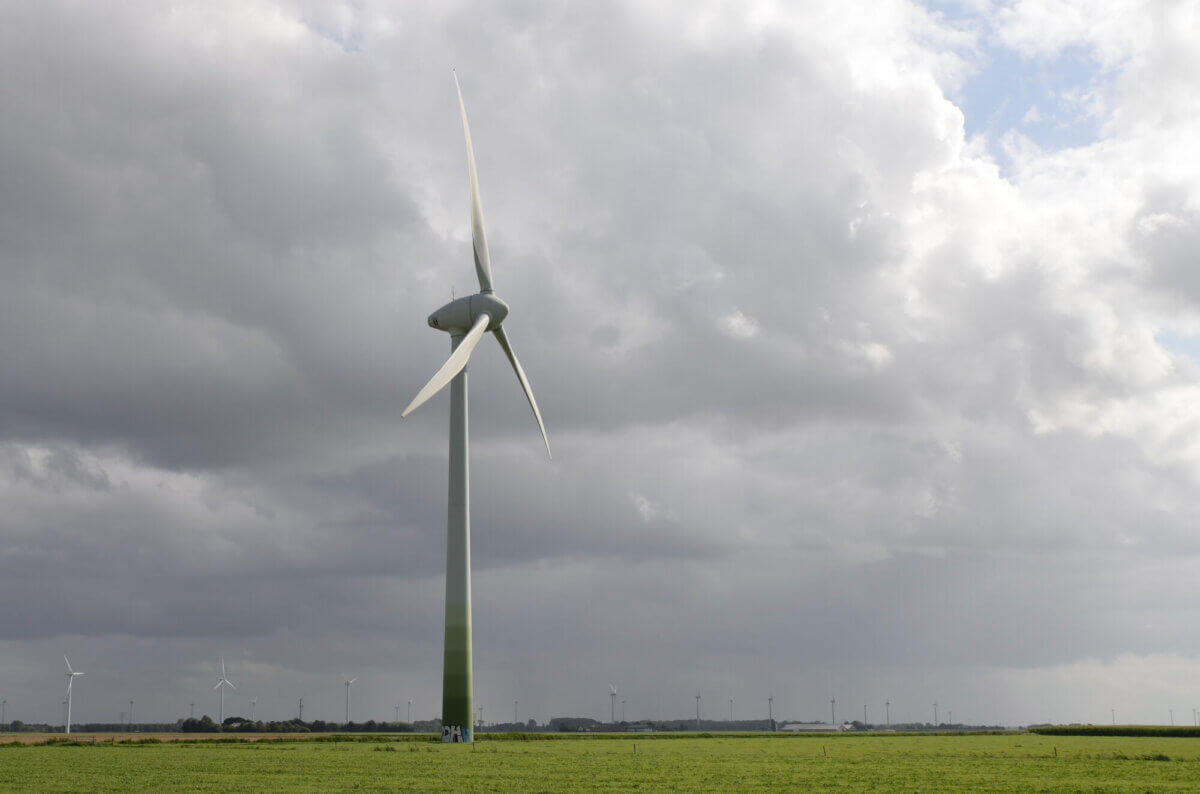Currently, many entrepreneurs are facing difficulties in requesting transmission capacity. Transmission and/or distribution grid operators cannot make available the amount of transmission capacity requested for a new connection, or expansion of the transmission capacity thereof. In popular terms it is often said that a company cannot get a connection, when in fact it is to a greater extent about not being able to obtain transmission capacity. The energy transition (from fossil fuels to renewable generation) and the associated electrification of industry in the Netherlands have, among other things, led to an increase in demand for transmission capacity. However, the electricity grids have not been reinforced at the same pace. We call this lack of transmission capacity on the electricity grid ‘congestion’. Since the necessary grid reinforcements have not yet been realized and will not be anytime soon, the congestion problem will last for at least several years. That is why the existing electricity grid should be used more efficiently, resulting in the optimization of available transmission capacity.
Transmission capacity[1] on the electricity grid should be optimized. While transmission capacity is fully contracted in many parts of the electricity grid, customers rarely use the full transmission capacity they contract from the grid operator. The reason for this is that customers enter into a connection and transmission agreement (aansluit- en transportovereenkomst (ATO)) (CTA) with the grid operator in which they (must) contract their peak demand. In short, a transmission or distribution grid is ‘full’ when the peak capacity as contracted in the CTAs added together, leads to the maximum possible load of the electricity grid. If this is the case, no new CTAs can be agreed upon and companies can no longer obtain (more) transmission capacity. This leads to both new parties and existing connected parties looking to expand their businesses, being unable to purchase and use the electricity they need.
Until recently, it was only possible to enter into a ‘firm CTA’ with the grid operator. A firm CTA is a CTA with a ‘fixed transmission right’. With a firm CTA, the connected party is always, at any time of the day, fully entitled to its contracted transmission capacity. That transmission capacity, as mentioned, is based on the peak demand of the respective connected party. However, many connected parties use their peak demand only occasionally and, as a rule, they do not use their peak all at once. Grid capacity is therefore only actually and technically insufficient at specific (peak) times (during the day). This means that outside these peak moments there is room for parties (that cannot get any (or no additional) transmission capacity at all) to use transmission capacity on the grid available at those moments.
Grid operators are obliged under the Electricity Act 1998 to act non-discriminatory towards parties that wish to enter into a CTA and to request for transmission capacity. The grid operators must also fulfill the obligations laid down in the CTA. Previously, i.e., before the introduction of alternative and flexible transmission rights, grid operators could not facilitate optimal use of the grid due to the lack of a legal basis for this. The Authority for Consumers and Markets (ACM) (the national regulatory authority in the Netherlands) tackled this by issuing the final code amendment decision on non-firm ATO/CTA or NFA (NFA Decision) on 31 January 2024, to adopt this instrument in regulation on the one hand and by publishing a draft decision on alternative transmission rights (ATR) (Draft Decision ATR).
Below, we will first briefly discuss the process and background of the introduction of ATR and flexible transmission rights (i.e., a specific form of ATR). Followed by highlighting some features (from ACM’s NFA Decision and the Draft Decision ATR). We end this blog with some concluding remarks.
Introducing new transmission rights: ATR and NFA
An ATR is a transmission right of which the availability of transmission capacity is not continuously guaranteed. ATR is a so-called ‘non-firm’ transmission right and differs from firm transmission rights, where the connected party (as mentioned above) always has a ‘right’ to and availability of the agreed transmission capacity.
- There are three types of ATR:
- Flexible transmission rights,
- Time-based transmission rights,
- A combination of flexible, time-based and firm transmission rights.
The NFA (non-firm CTA)
Next to ATR, there is also the so-called non-firm ATO/CTA (NFA). In the Draft Decision ATR, the ACM explains that in an NFA, fully variable or flexible transmission rights are offered.
The NFA is a tool to enable connected parties with flexible transmission needs to provide for transmission capacity outside peak moments of the day and is therefore a fully flexible transmission right. This means that a connected party is only entitled to transmission capacity in the remaining off-peak moments of grid use and only when the grid operator has allocated this capacity. The discount in return is that the tariff per kW contracted (i.e., a component of tariffs and contracted capacity) is set to zero.
Background
On 20 December 2022, the Minister for Climate and Energy presented the National grid Congestion Action Programme (Landelijk Actieprogramma Netcongestie (LAN)) to the Dutch House of Representatives (Tweede Kamer). The LAN was drafted by grid operators, the ACM, fellow public authorities, central government and market parties. By means of the LAN, the parties involved aim to reduce and prevent (the consequences of) grid congestion as much and as quickly as possible. One of the LAN’s main objectives is to steer more strongly towards better utilization of transmission capacity on the grid, including through the flexible use of space on the electricity grid (e.g., through ATR, such as flexible transmission rights) and by clearing queues in congestion areas. The introduction of ATR implements the LAN. The introduction of ATR is also in line with the principles formulated in the National Energy grid Plan (NPE) presented by the Minister for Climate & Energy on 1 December 2023. In the NPE, the government maps out how the energy grid of the future should look like and what is needed to achieve this. In the NPE, the Dutch government underlines its intention to focus on strengthening the electricity grid, sufficient transmission capacity and (encouraging) the efficient use of the electricity grid. The introduction of ATR is thus in line with the NPE.
On 13 March 2024, the ACM published the Draft Decision ATR, following the proposal drafted by all the grid operators in the Netherlands, united in Netbeheer Nederland (NBNL) to introduce two new ATR, which are the ‘time-based transmission right’ and the ‘time-block-based transmission right’. In the Draft Decision ATR, the ACM proposes that the code changes will enter into force as per 1 April 2025.
Principles ATR
ATR is a new (yet to be introduced) instrument that complements the existing (fixed) transmission rights, both in areas of (imminent) congestion and beyond. The most recently published Draft Decision ATR offers two new ATR for this purpose. In addition to NFA:
- The time-based transmission right:
- Entitles the connected party to transmission for 85% of the total number of hours in a year (at least 7446 hours per year).
- This also means that the connected party can be limited in the availability of contracted transmission capacity by the grid operator for up to 15% of the year.
- Provides for a discount on the transmission-dependent consumption tariff for the connected party.
- The connected party does not know in advance exactly which hours will be limited.
- The grid operator informs the connected party one day ahead.
- Only available on the national high-voltage grid both in congested and non-congested areas, for the time being.
- Suggested by NBNL that this possibility should come into effect on 1 April 2026.
- Time block-based transmission right:
- Entitles the connected party to transmission within time blocks agreed with the network operator.
- Entitles Outside the time blocks, the connected party has no transmission right.
- Gives the connected party a discount on the transmission-dependent consumption tariff.
- The contracted time blocks are outside peak times and may differ per grid location. Will for the time being only be available on the regional grid both in congested and non-congested areas.
- It has been proposed by NBNL that this possibility should come into effect on 1 April 2025
The ACM deems appropriate that over time, when there is more experience gained with both new ATR, the extent to which both these transmission rights can be offered on all networks should be examined.
In our view, the following principles and preconditions of ATR are particularly relevant to the market:
- ATR is a ‘voluntary choice’ by a connected party (in congestion areas, the alternative is no transmission capacity at all, which results to the extent that the choice is not entirely voluntary). A connected party can also apply for a combination of a firm transmission right and an ATR or extend its firm transmission right with an ATR;
- Congestion management and ATR are different measures to use the grid as efficiently as possible. These measures can co-exist. grid operators may not use flexible transmission rights to avoid their congestion management obligations and grid operators are only obliged to offer flexible transmission rights when the financial or technical limit for congestion management is reached;
- an ATR can be offered to electricity consumers and producers (that feed-in to the grid);
- the tariffs must match the flexible use of connected parties, e.g., through a tariff discount, or the way they can use the grid based on an ATR;
- grid security must be guaranteed when applying an ATR and the ACM will have to monitor the deployment and effect of this new instrument.
Other congestion measures
In addition to the above measures, other instruments can also provide solutions in case of congestion. Congestion measures are separate from ATR, but we will mention these measures here (briefly) to explain the differences with ATR.
- CBC: i.e., capacity reduction. Such a capacity reduction contract (capaciteitsbeperkingscontract (CBC)) provides a product for solving congestion. A CBC is substantially different from an alternative contract form such as an NFA. The CBC is an additional contract on top of a CTA. Under a CBC, the connected party receives a CTA with fixed transmission rights, that the connected party is willing to waive due to congestion, against payment and on terms agreed in advance in the CBC. The connected party will be able to use its fixed transmission right in full again when the congestion is resolved. The difference with ATR is that the latter has another starting point and envisages a more flexible and restricted grid use, independent of congestion.
- UIOLI: besides the possibility of concluding a CTA with an ATR, grid operators can use the so-called UIOLI power (an abbreviation for ‘use it on time or lose it’). This means that unused but already contracted (and thus ‘reserved’) capacity becomes free for other (potential) customers if the connected party has not used all the transmission capacity for a certain period.
The final code decision was published in the Dutch Government Gazette (Staatscourant) on 25 April 2024 and will enter into force on 26 April 2024 (UIOLI Decision). The UIOLI Decision allows, under specific conditions, for a grid operator to reduce the transmission capacity of (wholesale) connected customers who do not fully use the transmission capacity. The relevant transmission capacity is then available to other parties based on the so-called ‘first come first serve’ principle (which means whoever is highest on the waiting list).
Concluding remarks
Even though the Draft Decision ATR is not yet finalized, the introduction of ATR and NFA (and UIOLI for that matter) will offer new opportunities to use the electricity grid more efficiently. The proof of the pudding is going to be in the eating, whether companies can work with these alternative and flexible transmission capacity rights. For parties that have yet to be connected and whose business processes can be set up at times when they can use their flexible transmission rights, we expect that ATR can provide an (interim) solution until the electricity grid is sufficiently reinforced.
Whether companies with currently contracted their peak load can be tempted to switch to cheaper, flexible transmission rights is of course questionable. If they do not, they may run the risk in the future that their transmission capacity will be scaled back if UIOLI will be applied if they do not actually use their fully contracted transmission capacity. The question is to what extent grid operators will use this authority in practice. It is not inconceivable that parties needing transmission capacity will encourage grid operators to use ATR and UIOLI where possible.
For more information or if you have questions regarding this topic or other energy related matters, please contact the authors of this blog Léone Klapwijk and Noortje van Bergeijk.
Follow our Van Doorne’s LinkedIn Energy Community to stay up to date on energy and climate developments in the Netherlands: https://www.linkedin.com/showcase/van-doorne-energy-community/
[1] Please note that in this article the term “transmission capacitity” and “transmission rights” also refers to “transportation capacity” and “transportation rights”. In Dutch law the same term (transportcapaciteit and transportrecht) is used for high-voltages and lower voltages distribution networks.





